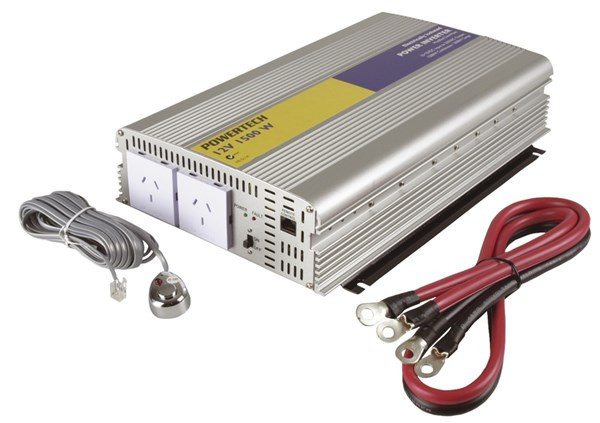What is a power inverter and what it is used for?
A power inverter is a piece of equipment designed to change DC power from a battery into conventional AC power, allowing users to connect all kinds of devices (kitchen appliances, electric lights, power tools, TVs, computers, etc). All you need to do is connect it to a battery and plug your AC devices into the inverter.
The battery to which the power inverter will be connected will need to be recharged with time as the power is taken out. It can easily be recharged by a gas generator, solar panels or by running the automobile motor. Simply said, these are devices that provide portable power, whenever and wherever you need it.
What size inverter do I need to get?
Since many sizes and brands of power inverters are available out there, the size you need depends on the amount of watts required by the devices you want to run. Experts recommend consumers to buy a larger model than you think you will need – at least 10% to 20% more than the largest load. For example, if you are planning to power a computer with a 15” monitor (300 watts) and some lights (2-60 watt lights = 120 watts), you will need at least a 500 W power inverter. However, you should consider buying a larger inverter as there will likely be a time when you want to run a fan while also using the computer or watching TV. So, before you purchase an inverter, determine first how much power your appliances or tools require to get started and also keep running continuous load.
How to use a power inverter safely?
Modern power inverters have never been safer as they are now, and they come with a variety of features that can help keep you out of trouble. However, to avoid any injury and as a means of precaution, it is always advisable to read the instructions first and only then use the device.
In case of a blackout, just like with a generator, you’ll need additional fuel to power your car. When keeping extra fuel, it is important to store it in a ventilated and cool area, away from any source of sparks or heat. Here are some other tips for safe use of your equipment.
- The vehicle that is providing power to the inverter has to be outside so that the exhaust does not pose a threat of entering your home.
- Remember to maintain the device away from any possible flammable gas source since plugging cords to the inverter or connecting it to the battery can create a spark.
- When the inverter is connected, make sure you keep it as far as possible from the car’s engine compartment.












